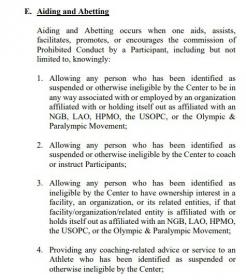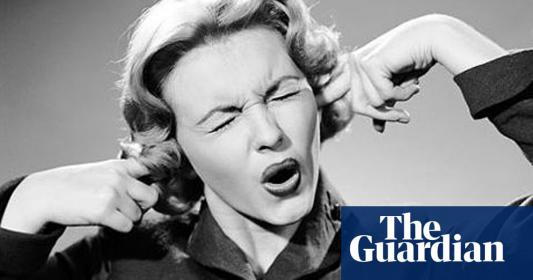A quick glance at a handful of state statutes with very similar language to the SafeSport "Aiding and Abetting” language, and a dozen or so scholarly articles make things pretty clear to me. Wikipedia (https://en.wikipedia.org/wiki/Aiding_and_abetting) distills it nicely for laymen:
[Aiding and abetting] is derived from the United States Code (U.S.C.), section two of title 18: INDENT Whoever commits an offense against the United States or aids, abets, counsels, commands, induces or procures its commission, is punishable as a principal.[/INDENT]
…
For a successful prosecution, the provision of “aiding and abetting” must be considered alongside the crime itself, although a defendant can be found guilty of aiding and abetting an offense even if the principal is found not guilty of the crime itself. In all cases of aiding and abetting, it must be shown a crime has been committed, but not necessarily who committed it. It is necessary to show that the defendant has willfully associated himself with the crime being committed, that he does, through his own act or omission, as he would do if he wished for a criminal venture to succeed. Under this statute, anyone who aids or abets a crime may be charged directly with the crime, as if the charged had carried out the act himself.
Let’s say I command someone to rob a bank — my “aiding and abetting act” is the command to rob the bank and the “crime” is bank robbery. I might be culpable for aiding and abetting bank robbery if that someone robs the bank, but I would not be culpable for aiding and abetting bank robbery if that someone does not rob the bank. (I might be culpable of some other offense, such as conspiracy to commit the crime, but not aiding and abetting). This is exactly how the Federal law is interpreted. The handful of states that I surveyed treat aiding and abetting similarly.
The language for "aiding and abetting” in the Federal law cited above is mirrored by that of SafeSport:
E. Aiding and Abetting occurs when one aids, assists, facilitates, promotes, or encourages the commission of Prohibited Conduct …
Because this SafeSport language mirrors the language of the Federal code, I suggest that this SafeSport language should be interpreted in an identical manner, namely that the aiding and abetting act must be accompanied by commission of some Prohibited Conduct.
As for the items E1-E5 of SafeSport, I suggest that these items merely clarify what might constitute “aiding and abetting acts,” but that they in no way diminish or eliminate the need for commission of some Prohibited Conduct. Those who disagree — those who believe that these aiding and abetting acts alone constitute culpable conduct — will have to argue that aiding and abetting for SafeSport means something completely different that what it means in every other context, despite using virtually identical language.
Again, folks should consult their own attorney regarding these matters.


